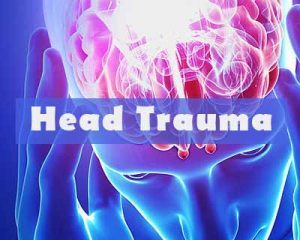- Home
- Editorial
- News
- Practice Guidelines
- Anesthesiology Guidelines
- Cancer Guidelines
- Cardiac Sciences Guidelines
- Critical Care Guidelines
- Dentistry Guidelines
- Dermatology Guidelines
- Diabetes and Endo Guidelines
- Diagnostics Guidelines
- ENT Guidelines
- Featured Practice Guidelines
- Gastroenterology Guidelines
- Geriatrics Guidelines
- Medicine Guidelines
- Nephrology Guidelines
- Neurosciences Guidelines
- Obs and Gynae Guidelines
- Ophthalmology Guidelines
- Orthopaedics Guidelines
- Paediatrics Guidelines
- Psychiatry Guidelines
- Pulmonology Guidelines
- Radiology Guidelines
- Surgery Guidelines
- Urology Guidelines
Pediatric law and radiology experts define abusive head trauma

Abusive head trauma (AHT), a medical diagnosis of infants and young children who suffer from inflicted intracranial and associated spinal injuries, is often misrepresented in legal proceedings of child abuse, according to a consensus statement supported by nine pediatric and radiology international organizations published in Pediatric Radiology. The statement outlines consensus of evidence-based medical opinion on AHT to confirm the validity of the diagnosis and serve as a tool for the legal system.
"When pivotal medical testimony on child abuse is contradictory, the message to the courts, the news media, and the general public about infant injuries and safe caregiving can be confusing and inaccurate," said Arabinda Choudhary, MD, chair of pediatric radiology at Nemours/Alfred I. duPont Hospital for Children in Wilmington, DE. "Denialism of child abuse has become a significant medical, legal and public health problem. This article will help re-establish the science of abusive head trauma and will undoubtedly help children and their advocates around the world."
The authors of the paper utilized their collective and extensive clinical experience, as well as an empirical review of the medical literature in developing the consensus statement. AHT is the leading cause of fatal head injuries in children younger than two years old and is responsible for 53 percent of serious or fatal traumatic brain injury cases. The statement was supported by the Society for Pediatric Radiology (SPR), European Society of Paediatric Radiology (ESPR), American Society of Pediatric Neuroradiology (ASPNR), American Academy of Pediatrics (AAP), European Society of Neuroradiology (ESNR), American Professional Society on the Abuse of Children (APSAC), Swedish Paediatric Society, Norwegian Pediatric Association and Japanese Pediatric Society.
No single injury defines AHT, instead pediatricians and pediatric subspecialists make diagnosis based on information collected through clinical history, physical examination, and laboratory and imaging data. In many children's hospitals, an interdisciplinary team of specialists that includes physicians, nurses, hospital social workers and others works together to evaluate cases.
The consensus statement is intended to help the court system recognize unsubstantiated medical expert testimony in child abuse judicial cases. Key points include:
- Abusive head trauma is the current most appropriate and inclusive diagnostic term.
- Relatively few infants with AHT have isolated intracranial injury without retinal hemorrhages, fractures or other manifestations of child abuse.
- Each infant suspected of suffering AHT must be further evaluated for other diseases that might present with similar findings.
- There is no reliable medical evidence that other medical causes could cause injuries mimicking abuse injuries.
- There is no controversy about the methodology used to diagnose AHT as a medical disease, unrelated to the legal determination by a judge or jury.
"Abusive head trauma is a medical diagnosis, not a legal determination. Even if medical evidence supports a finding of child abuse, non-medical evidence is required to answer the legal questions," said Choudhary.
For more details click on the link: http://dx.doi.org/10.1007/s00247-018-4149-1

Disclaimer: This site is primarily intended for healthcare professionals. Any content/information on this website does not replace the advice of medical and/or health professionals and should not be construed as medical/diagnostic advice/endorsement or prescription. Use of this site is subject to our terms of use, privacy policy, advertisement policy. © 2020 Minerva Medical Treatment Pvt Ltd